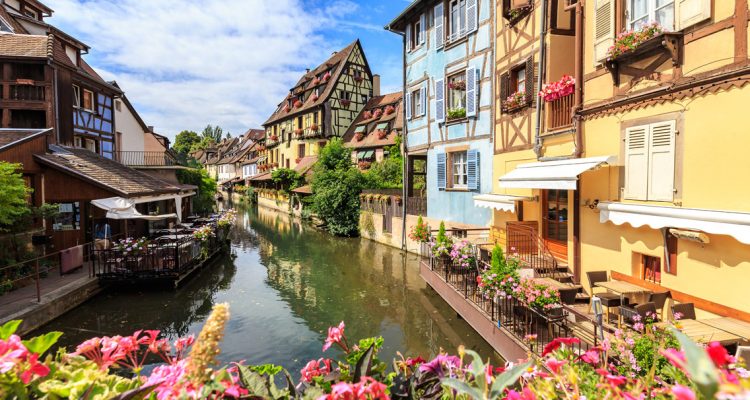(Click here to read Alsace – Part 1)
(Click here to read Alsace – Part 2)
(Click here to read Alsace – Part 3)
(Click here to read Alsace – Part 4)
Domaine Jean-Luc Mader in Alsace, France
 What is it like to grow up in a winemaking family? Do you have to go into the family business? In this case, yes and no. Jérôme Mader’s sister went into architecture, and Jérôme — once he got over wanting to be a policeman or a fireman when he was eight years old — chose to become a winemaker. After completing his enology training in nearby Dijon and Beaune in France, Jérôme worked in a number of wineries in different countries, including New Zealand and South Africa. In 2005, he joined the family winery.
What is it like to grow up in a winemaking family? Do you have to go into the family business? In this case, yes and no. Jérôme Mader’s sister went into architecture, and Jérôme — once he got over wanting to be a policeman or a fireman when he was eight years old — chose to become a winemaker. After completing his enology training in nearby Dijon and Beaune in France, Jérôme worked in a number of wineries in different countries, including New Zealand and South Africa. In 2005, he joined the family winery.
Jérôme’s family had had vineyards for some time. His grandfather sold the grapes to the local cooperative, as was customary in the area. Then when his parents took over the family property, they decided to keep their grapes and start making their own wine. They established the Domaine Jean-Luc Mader winery in 1981.
The first thing Jérôme did was to transition the vineyards to organic viticulture. Today, all the grapes are hand-harvested. Jérôme’s wines are considered to be amongst the finest in the area, despite the fact that he produces only 50,000 bottles per year on his 10 hectares (about 25 acres) of land.
Some of these vineyards are located in Alsace’s demarcated Grand Cru zones: Rosacker and Schlossberg. In total, all of Alsace’s Grand Cru vineyards comprise only 4% of the vineyard area of the region: those which have the finest terroir.

Of course, the domaine also produces a full complement of white wines including Riesling and Pinot Gris, which are quite healthy and planted in enough different microclimates to withstand climate change problems for the present, says Jérôme.
Which is not the case with red wine. Alsace has recently become known for its stylish, light red Pinot Noir. But in this region, where pinot noir grapes barely ripened a few decades ago, winemakers like Jérôme are facing the fact that they may only have another ten years of making great Pinot Noir wine here. They are already looking for the next red grape to plant, seeking options from grapes that are now grown in a much warmer climate, in the South of France. Currently, Jérôme and other winemakers in Alsace are experimenting with syrah (aka shiraz). For now these plantings are just trials. All wines must be officially approved by the winemakers’ consortium before they can be labeled as Alsace wines, and syrah is currently not on the approved list because it did not grow well here in the past. Come back in a few years and the landscape of red wines may be very different in Alsace…

THE WINES
2019 Jean-Luc Mader Riesling “Rosacker” Grand Cru — This is their flagship wine. The wine is very concentrated, with a lemon-lime zinginess throughout. The grapes are grown in a grand cru vineyard that has the romantic name of field of roses. There, the soil is deep and cool, containing limestone with some clay which gives the wine a nice backbone of acidity, says Jérôme.
2019 Jean-Luc Mader Pinot Noir “Muhlforst” — Maybe it’s the name of this wine, which means windmill in a forest, but I noticed a nice strain of sous-bois (forest-floor earthiness) here. The wine has a tiny hint of burnt sugar and a lot of fruit, cherry and strawberry, so it resembles a New World wine more than a Burgundy on the palate. Still, this is a fairly light wine, stylish yet easy to enjoy now. Jérôme Mader recommends drinking it slightly chilled.

